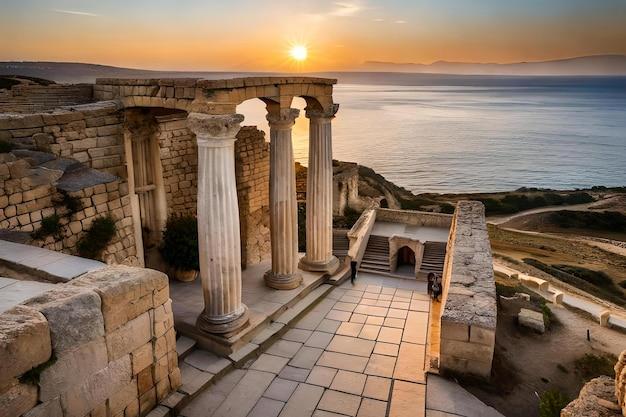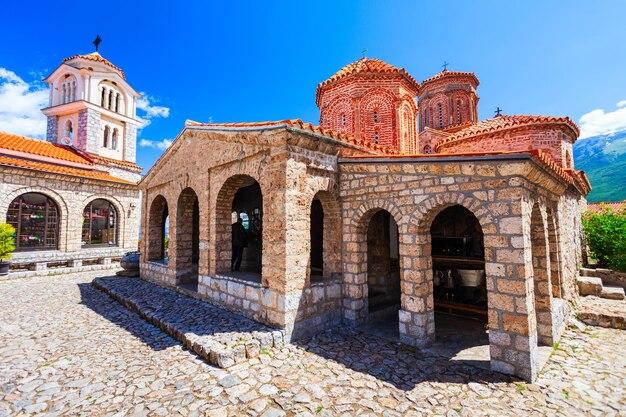Throughout history, various ancient civilizations have held diverse beliefs and worshipped different deities. One intriguing aspect of the ancient Indus Valley Civilization, also known as the Harappan Civilization, is their profound devotion to the Mother Goddess. The Harappans attributed immense importance to the female divine figure, depicting her in various forms and incorporating her worship into their daily lives. In this blog post, we will delve into the reasons behind the Harappans’ reverential worship of the Mother Goddess and explore the significance she held in their society.
The examination of archaeological findings and artifacts from the Harappan Civilization offers valuable insights into their religious practices and their understanding of spirituality. By understanding the context in which the Mother Goddess was worshipped, we can gain a better understanding of the beliefs and values of the Harappan people. So, let us embark on a journey to uncover the secrets behind the Harappans’ devotion to the Mother Goddess and appreciate the impact she had on their lives thousands of years ago.

Why Harappans Worshiped the Mother Goddess
In the ancient Indus Valley civilization, the Harappans held the Mother Goddess in high regard, and her worship was a prominent aspect of their religious practices. But why did these ancient people choose to venerate the Mother Goddess? Let’s uncover the reasons behind their devotion to this deity.
The Nurturer of Life and Fertility
Divine Nurturer
The Harappans, much like modern humans, recognized the essential role of women in procreation and nurturing life. The Mother Goddess symbolized fertility, motherhood, and the nurturing aspects of womanhood. She was a deity to be revered for the vitality and abundance she represented.
Protection and Domain Over Nature
Guardian of Nature
The Harappans, deeply connected to their natural surroundings, believed in the divine power of the Mother Goddess to protect and govern the forces of nature. They observed the cyclical patterns of birth, growth, and decay in the world around them and attributed them to the influence of the Mother Goddess.
Unity and Social Structure
Unifying Force
Worshipping a common deity like the Mother Goddess helped establish a sense of unity among the Harappan people. Regardless of social status or occupation, their devotion to the Mother Goddess provided a shared cultural and religious identity. This unity perhaps played a crucial role in the maintenance of social harmony and order.
Reflecting Matrilineal Society
Influence of Matrilineal Society
The Harappan civilization exhibited signs of a matrilineal social structure, where descent and inheritance were traced through the female line. The worship of the Mother Goddess could have stemmed from this societal framework, where women held significant roles and were highly respected. The deity may have served as a representation of their societal values and norms.
Seeking Guidance and Empowerment
Source of Guidance and Empowerment
The Mother Goddess embodied wisdom, strength, and guidance. The Harappans turned to her for support, seeking guidance in matters of fertility, agriculture, and daily life challenges. It is possible that individuals worshiped the Mother Goddess to acquire her power and assert their own agency in a world filled with uncertainties.
In conclusion, the worship of the Mother Goddess by the Harappans can be attributed to various factors, such as her association with fertility and nature, her unifying influence on the community, and the reflection of their matrilineal social structure. She was seen as the nurturer of life, the protector of nature, and a source of wisdom and empowerment. The devotion to the Mother Goddess not only offered spiritual solace but also played a vital role in shaping the cultural and social fabric of the Harappan civilization.
So, let us appreciate the rich history of the Harappans and the significance they placed on the worship of the Mother Goddess. It reminds us that even in the ancient past, humans found solace and inspiration in powerful female deities.

FAQ: Why did Harappans worship the Mother Goddess?
In the ancient Indus Valley Civilization, the worship of the Mother Goddess played a vital role. But why did the Harappans devote themselves to this divine figure? Let’s explore some frequently asked questions to shed light on this intriguing aspect of their culture.
What is the significance of the Mother Goddess in the Indus Valley Civilization
The Mother Goddess held great significance in the Indus Valley Civilization for several reasons. As a symbol of fertility, she represented abundance and life itself. The Harappans believed that by venerating her, they ensured the prosperity and well-being of their communities. Moreover, the Mother Goddess embodied the nurturing and protective qualities associated with motherhood, offering solace and guidance to her worshippers.
Why did the Harappans choose to worship the Mother Goddess
The choice to worship the Mother Goddess can be attributed to the profound reverence the Harappans had for the feminine aspect of divinity. They recognized the inherent power and creative force that resides within women, both in terms of procreation and nurturing. By worshipping the Mother Goddess, the Harappans honored and celebrated these qualities, seeking her blessings for an abundant and harmonious existence.
What is the biblical definition of righteousness
Although the topic of biblical righteousness may seem unrelated, it’s interesting to draw a comparison. Righteousness, according to the Bible, refers to moral integrity and adherence to God’s laws. Similarly, the Harappans believed that by worshipping the Mother Goddess and living in accordance with her teachings, they would attain righteousness in their own context. It is a reminder that expressions of faith can vary while still aiming for virtue.
What defines a kingdom
A kingdom is a form of governance led by a king or queen. It encompasses a geographical territory over which the monarch exercises authority. In the case of the Harappans, their worship of the Mother Goddess was closely tied to their societal structure, emphasizing the importance of divine kingship. The Mother Goddess, as a powerful deity, held sway not only over the natural world but also over the social hierarchy and governance of the civilization.
What constitutes righteousness in an individual
To determine what makes a person righteous, we must consider the values and beliefs of the Harappans. For them, righteousness meant aligning oneself with the principles embodied by the Mother Goddess—compassion, empathy, and respect for all life. It involved upholding moral conduct and striving to maintain harmony within the community. By following these virtuous paths, individuals aspired to connect with the divine and achieve righteousness in their own right.
In conclusion, the worship of the Mother Goddess held significant importance in the Indus Valley Civilization. The Harappans revered her as the embodiment of fertility, protection, and motherly virtues. By offering their devotion, they sought blessings for abundance and a harmonious existence. The concept of righteousness in this context aligned with leading a morally upright life, inspired by the qualities represented by the Mother Goddess. Through these beliefs, the Harappans established a deep connection with the divine and shaped their society around these spiritual principles.
So, next time you wonder why the Harappans worshipped the Mother Goddess, remember that it was not just a religious practice; it was an expression of their reverence for the feminine, their yearning for prosperity, and their pursuit of righteousness.
